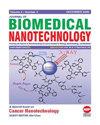Study on Correlation and Mechanism of Procollagen Lysine 2 Oxoglutarate 5 Dioxygenase on Stem Cell Characteristics and Vasculogenic Mimicry Formation in Esophageal Squamous Cell Carcinoma
IF 2.9
4区 医学
Q1 Medicine
引用次数: 0
Abstract
In this study, we investigated the significance of the stem cell transcription factor PLOD2 in esophageal cancer to enhance our understanding of its occurrence, development, recurrence, metastasis, and potential treatment. We conducted the following experiments: (1) Immunohistochemistry revealed elevated PLOD2 protein levels in esophageal carcinoma compared to adjacent tissues, with higher levels associated with advanced disease stages and lower differentiation. (2) Immunofluorescence demonstrated increased PLOD2 expression in esophageal cancer cell lines TE-1 and Eca- 109, suggesting a connection to cell differentiation. (3) We successfully transfected fluorescently labeled PLOD2 siRNA into cells, achieving a transfection rate of 67.57% and silencing efficiency exceeding 80%. (4) Following transfection, we observed a decreased proliferation rate in PLOD2 siRNA-treated cells, indicating that PLOD2 reduction can slow esophageal cancer growth. These findings emphasize that PLOD2 plays a crucial role in esophageal cancer pathogenesis, particularly in low cell differentiation maintenance. It could serve as a promising target for inducing differentiation in esophageal cancer and evaluating its malignancy. The high PLOD2 expression in esophageal cancer cell lines suggests the presence of tumor stem cells. Moreover, reducing PLOD2 through RNAi technology slows cell proliferation, suggesting that inhibiting PLOD2 may offer a potential therapeutic approach for esophageal cancer treatment.前胶原赖氨酸 2 氧化谷氨酸 5 二加氧酶与食管鳞状细胞癌干细胞特征及血管生成模拟形成的相关性及机制研究
在本研究中,我们研究了干细胞转录因子 PLOD2 在食管癌中的意义,以加深我们对食管癌的发生、发展、复发、转移和潜在治疗方法的理解。我们进行了以下实验:(1) 免疫组化显示,与邻近组织相比,食管癌中的 PLOD2 蛋白水平升高,且更高的水平与疾病晚期和低分化相关。(2)免疫荧光显示,PLOD2 在食管癌细胞系 TE-1 和 Eca- 109 中的表达增加,表明其与细胞分化有关。(3)我们成功地将荧光标记的 PLOD2 siRNA 转染到细胞中,转染率达到 67.57%,沉默效率超过 80%。(4)转染后,我们观察到经 PLOD2 siRNA 处理的细胞增殖率下降,这表明减少 PLOD2 可以减缓食管癌的生长。这些发现强调了 PLOD2 在食管癌发病机制中的关键作用,尤其是在低分化细胞的维持中。它可以作为诱导食管癌分化和评估其恶性程度的一个有前途的靶点。食管癌细胞系中 PLOD2 的高表达表明存在肿瘤干细胞。此外,通过RNAi技术减少PLOD2可减缓细胞增殖,这表明抑制PLOD2可为食管癌治疗提供一种潜在的治疗方法。
本文章由计算机程序翻译,如有差异,请以英文原文为准。
求助全文
约1分钟内获得全文
求助全文
来源期刊
CiteScore
4.30
自引率
17.20%
发文量
145
审稿时长
2.3 months
期刊介绍:
Information not localized
文献相关原料
| 公司名称 | 产品信息 | 采购帮参考价格 |
|---|

 求助内容:
求助内容: 应助结果提醒方式:
应助结果提醒方式:


